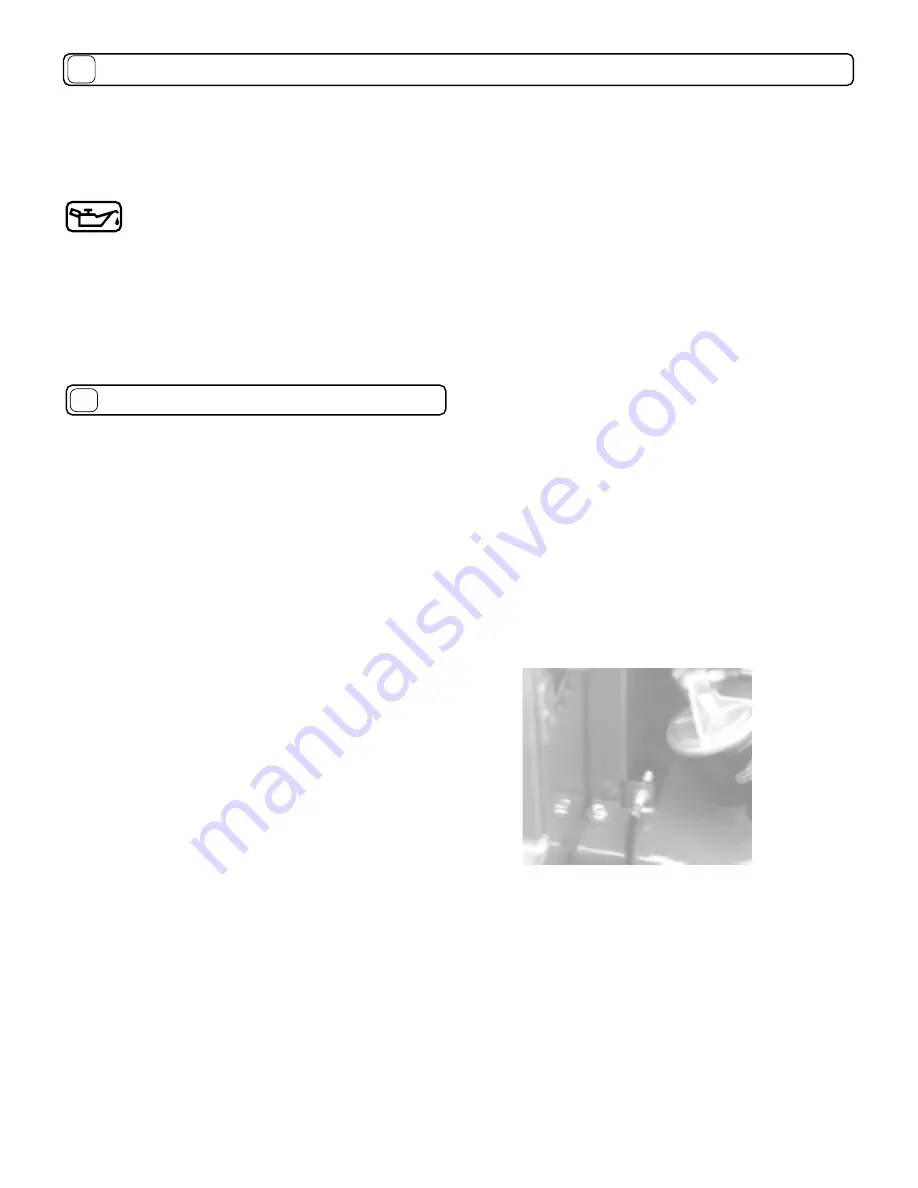
Part No. 430149 Form No. F110802A
Page 14 of 16
MAINTENANCE
continued
17
Clear
intake screens on housing and engine throughout use.
Inspect
machine for loose bolts before starting engine.
Lubrication:
Using S.A.E. 30 weight oil or
equivalent. See maintenance schedule.
Chain:
See SP section below.
Lower Control Ends
: Oil moving parts, such as
bail, and deflector door pivots.
Grease:
Front wheel, and Caster(SP only).
Tire air pressure:
Check at regular intervals & maintain:
Low tire pressure will make unit hard to push and turn.
Front tire at
30 psi
. (21.1 kPa).
Rear push 16" tires at
30 psi
. (21.1 kPa).
Rear SP 16" tires at
35 psi.
(24.6 kPa).
Rear caster tire (SP only) at
30 psi
(21.1 kPa)
Chain Adjustment:
(See fig. 11)
1. Remove spark plug wire.
2. Remove bottom drive guard.
3. Inspect chain and sprockets for wear, lubrication and
tension. Replace if badly worn or damaged. Skip to
CHAIN
REPLACEMENT
4.Check chain tension. There should be no more than 0.25"
total movement when chain is flexed from top to bottom.
5. To increase chain tension, loosen, do not remove, the bolts
that hold the bearings in place on each side and in the center
of the differential.
6. Loosen, do not remove, the Jam nut that locks the bolt into
the chain tensioner on each side of the differential.
7. With the bolts loose, equally tighten the chain tensioner bolt
on both the left and right side of the differential.
8. Adjust in small increments, checking chain alignment,
tension and axle squareness between steps. Roll wheels to
check that there are no excessively tight areas in the chain.
Repeat adjustment steps if necessary. A slightly loose chain is
better than an over tightened one.
9. With chain properly adjusted securely tighten the jam nuts,
and bearing mount bolts.
10. Reinstall drive guard.
11. Reconnect spark plug wire.
Chain Lubrication:
With machine not running, oil chain using
general purpose S.A.E. 30 weight oil every 25 hours or as
needed. Chain oiling hole is located on operator's left at rear
of engine base. Note: Be sure that entire length of chain is
properly oiled. Oiling only a few positions in the chain rotation
will not properly oil the chain.
17.3
DRIVE
Chains and Belts are normal replaceable wear items. A new
chain should not be used on worn sprockets. Sprockets
should be inspected and replaced when worn.
MAINTENANCE- SP MODELS ONLY
Brake Adjustment:
As parking brake wears, the brake discs
may eventually require adjustment. To adjust, remove bottom
guard from engine base and tighten brake adjusting nut on
transmission. Adjust cable nut as required. Unit must free-
wheel in neutral with clutch engaged and brake off.
DO NOT OVER ADJUST
.
Belt Adjustment:
As V-belt wears, adjustments may be
required to maintain proper clutch engagement. Adjust by
tightening or by loosening clutch cable adjusting nut as
required, located on operators left near the face of the engine
(See fig. 10). When replacing belt, see
BELT REPLACEMENT
.
DO NOT OVER ADJUST
.
Belt Replacemment:
1. Remove impeller, follow impeller removal instructions on
page 13.
2. Remove six screws securing blower housing.
3. Inspect for worn or damaged pulleys. Replace if necessary.
4. Replace worn belt.
5. Replace housing. Note: Be sure to replace lock clip on
upper bolts in exact manner that it was originally installed.
6. Replace impeller, refer to impeller removal instructions on
page 13.
7. It may be necessary to adjust the belt engagement. See
Belt
Adjustment.
Chain Replacement:
(See fig. 11)
1. Remove spark plug wire.
2. Remove bottom drive guard.
3. Inspect sprockets for wear. Replace if badly worn or dam-
aged.
4. Release chain tension. See
Chain Adjustment
.
5. Remove operators right and center axle bearings.
6. Remove old chain by sliding over the axle and out the hole
that the right axle bearing was mounted in.
7. Install new chain in the reverse order of removal.
8. Set chain tension. See
Chain Adjustment
.
9. Replace bottom drive guard.
10. Replace spark plug wire.
Fig. 10

































